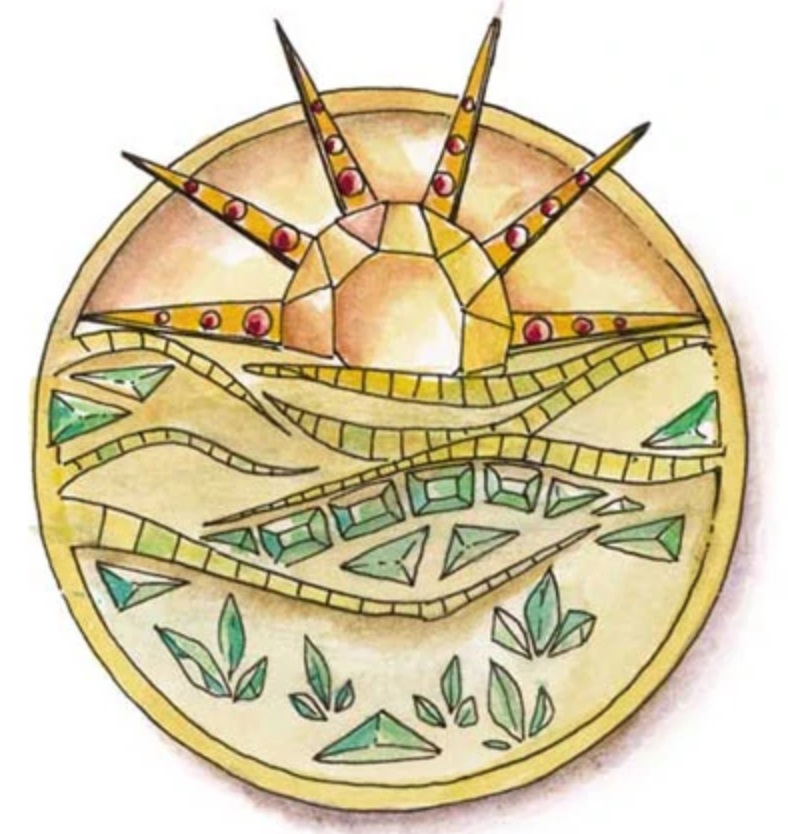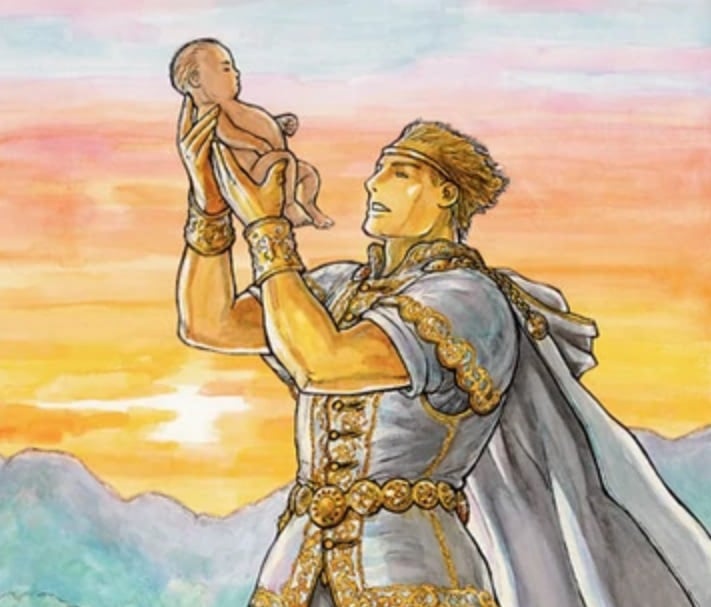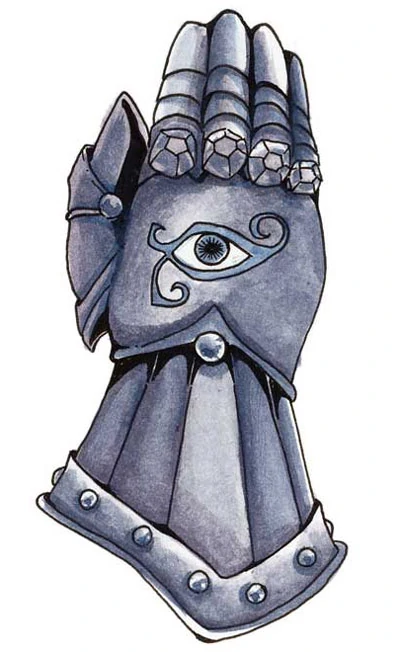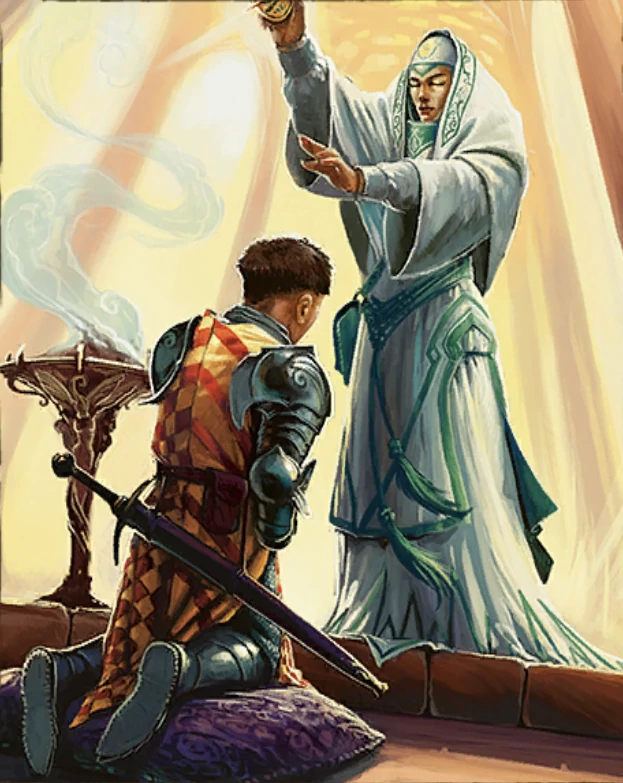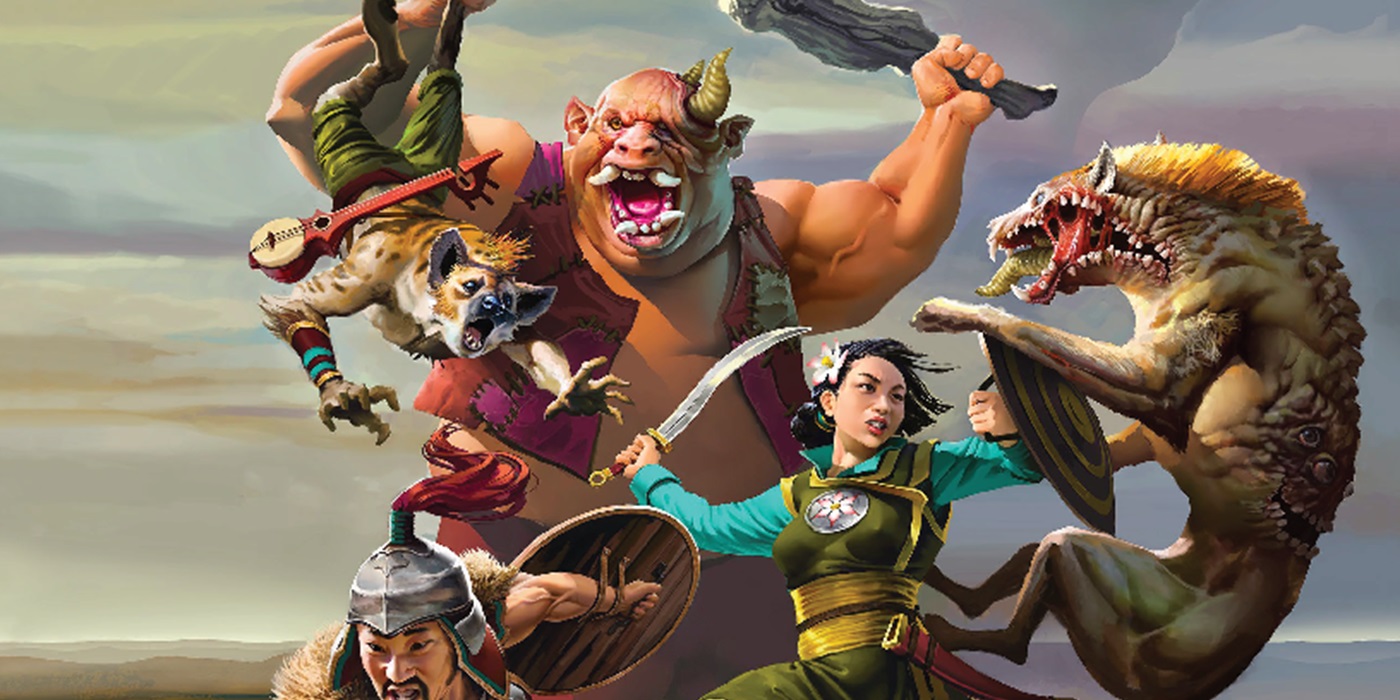D&D: An Adventurer’s Guide to Lathander – The Morninglord
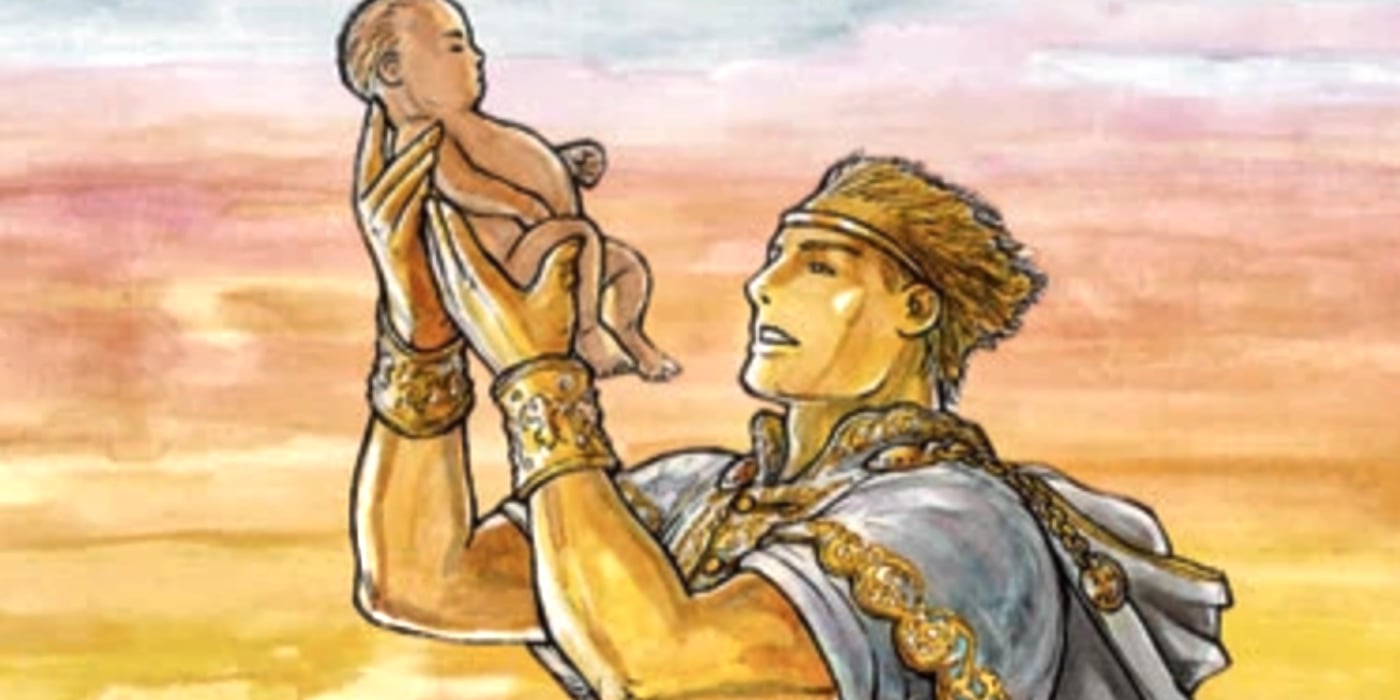
You’ve plundered his monastery in Baldur’s Gate 3, but did you know that Lathander, the Morninglord was actually once two separate gods?
Lathander the Morninglord is one of Faerûn’s sun gods and one who figures prominently in the first act of Baldur’s Gate 3. If you’ve ever descended into the halls of the Rosymorn Monastery and tangled with the Githyanki of Crech Y’llek, you’ve been on sacred ground.
You’ve potentially even blown up that sacred ground, depending on how thoroughly and greedily you’ve explored. But who is Lathander? What is his whole deal? Why does he have a giant laser? That last one, we don’t know, but for the rest, we turn to the Dawn of History.
The Sun warms and protects. It nurtures and nourishes, giving heat and warmth that many may survive. And yet, the Sun was not always regarded as a gentle, caring warmth. In past times, it was harsh and fiery. A strict patron. Both aspects can be seen in Faerun’s solar deity, Lathander the Morninglord.
Lathander, as he is known, is a benevolent deity. The Morninglord is a deity of creativity, dawn, renewal, birth, athletics, spring, self-perfection, vitality, and youth. Like many gods of light, Lathander abhors the undead. Those who dispel them or who foster new life are often favored by him.
Lathander is a calming presence in the Forgotten Realms. He is called upon in defense and frequently by those who have–or yearn for–hope. Lathander might be called upon to bless birth or fertility rites just as readily as to ward off the encroaching darkness.
But though he is a calming, benevolent presence, Lathander once brought ruin to Faerun.
Lathander and the Dawn Cataclysm
One cannot talk about Lathander without talking about the Dawn Cataclysm. It is a mythic event that takes place in the mists of Faerunian history. No mortal historian has ever been able to give it a definitive date–but it comes in the distant past, between the time when the oceans drank Netheril and the rise of the sons of Myth Drannor.
But what was the Dawn Cataclysm? It was an attempt by Lathander to remake the entire pantheon of Faerun in his own image. Yes, humble, healing Lathander once tried to usurp all deities in Faerun.
The resulting effect left several deities dead in the fallout and several powerful outsiders. The Morninglord’s efforts left the goddess Murdane dead and earned Lathander the ire of Helm. To this day, Helm has never forgiven Lathander.
The other big loss was Lathander’s own lover, Tyche, the original goddess of fortune who left Faerun to wander the many worlds. In many ways, the Dawn Cataclysm still has repercussions felt to this day.
Lathander, the Morninglord’s Reformation
In order to recover from the catastrophic events, Lathander began to subtly reform his faith. Through the years, this means Lathander undertook actions he wanted to see. When the Cult of the Dragon reared its head, Lathander created an Avatar to send to personally battle with Sammaster, the founder of the Cult of the Dragon in Faerun.
Lathander once gifted a mighty magic sword to the Heroes of Waterdeep, aiding them in their quest to cleanse a fallen temple in Myth Drannor.
During the Time of Troubles, Lathander faded from existence. In his place, the resurrected Amaunator, a once neutral deity of the Sun. This new Amaunator inherited the goodness of Lathander, becoming a Lawful Good deity in the process.
However, during the Spellplague and the Second Sundering, Lathander’s followers changed that. His Chosen worshippers and his prophet Stedd Whitehorn brought the deity back from the darkness. And in the present day, Amaunator and Lathander are once again worshipped as two different beings.
From would-be tyrant to nurturing fount, Lathander’s light has undergone quite a journey.
Happy adventuring!

